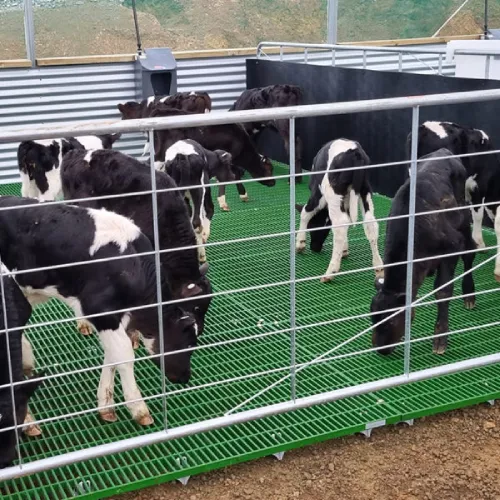loading...
- No. 9, Xingyuan South Street, Dongwaihuan Road, Zaoqiang County, Hengshui, Hebei, China
- admin@zjcomposites.com
- +86 15097380338
- Welcome to visit our website!
Understanding Reverse Osmosis Membrane Housing and Its Importance in Water Filtration Systems
Understanding Reverse Osmosis Membrane Housing A Key Component in Water Purification
Reverse osmosis (RO) technology has become a cornerstone in water purification systems, efficiently addressing the challenges of water scarcity and contamination. Central to this technology is the reverse osmosis membrane housing, a critical component that ensures the effective functioning and longevity of the RO membranes. This article explores the significance, structure, and considerations surrounding reverse osmosis membrane housing.
What is Reverse Osmosis?
Reverse osmosis is a process that removes impurities from water by using pressure to force water molecules through a semipermeable membrane. The membrane allows only water molecules to pass but blocks larger molecules, contaminants, and salts. This process is widely used in desalination, wastewater treatment, and various industrial applications to produce clean, potable water.
The Role of Membrane Housing
The membrane housing serves as the protective shell that encases the RO membrane. It is designed to withstand high pressures and maintain the integrity of the membrane while allowing the effective removal of contaminants. The housing ensures that the treated water can be collected efficiently without any leaks or contamination from the external environment.
Structure and Materials
Typically made from high-quality materials such as polypropylene, stainless steel, or fiberglass-reinforced plastic, the membrane housing must be durable and corrosion-resistant. The choice of material depends on the application and the quality of water being treated. For instance, in applications involving saline water or aggressive chemicals, stainless steel is often preferred due to its superior resistance to corrosion.
The housing configuration can vary, featuring either single or multiple membrane elements. Each design has its advantages; for example, multiple-element housings are often used in large-scale applications, while single-element systems are more common in home water filtration units.
reverse osmosis membrane housing

Key Considerations
When selecting a reverse osmosis membrane housing, several factors must be considered to ensure optimal performance
1. Compatibility The housing must be compatible with the specific RO membrane being used. Different membranes may have varying dimensions and construction materials, and the housing should accommodate these differences to prevent any operational issues.
2. Pressure Rating The housing must be able to withstand the operational pressure of the system without failing. RO processes often operate at high pressures, sometimes exceeding 300 psi, and housing must be designed to handle these conditions safely.
3. Size and Configuration The size of the housing is determined by the volume of water to be treated and the number of membrane elements needed. Understanding the required flow rate and capacity is essential to selecting the appropriate housing configuration.
4. Ease of Maintenance Regular maintenance is crucial for the efficiency of RO systems. Housing that allows for easy access to membranes for cleaning or replacement can significantly enhance operational efficiency and reduce downtime.
5. Cost-effectiveness While it is essential to invest in high-quality materials, balancing cost with performance is also vital. Selecting a housing that offers durability and compatibility at a reasonable price will provide the best long-term value.
Conclusion
The reverse osmosis membrane housing plays a critical role in the overall performance of water purification systems. By providing a protective environment for the membrane and ensuring efficient operation, it contributes significantly to the delivery of clean water. As water purification needs continue to grow, understanding the importance of components like membrane housing becomes ever more crucial in developing effective solutions for water sustainability. Proper selection, maintenance, and operation of reverse osmosis membrane housing can lead to enhanced system efficiency, prolonged membrane life, and ultimately, cleaner water for various applications around the world.
-
The Rise of FRP Profiles: Strong, Lightweight, and Built to LastNewsJul.14,2025
-
SMC Panel Tanks: A Modern Water Storage Solution for All EnvironmentsNewsJul.14,2025
-
GRP Grating: A Modern Solution for Safe and Durable Access SystemsNewsJul.14,2025
-
Galvanized Steel Water Tanks: Durable, Reliable, and Ready for UseNewsJul.14,2025
-
FRP Mini Mesh Grating: The Safer, Smarter Flooring SolutionNewsJul.14,2025
-
Exploring FRP Vessels: Durable Solutions for Modern Fluid HandlingNewsJul.14,2025
-
GRP Structures: The Future of Lightweight, High-Performance EngineeringNewsJun.20,2025
